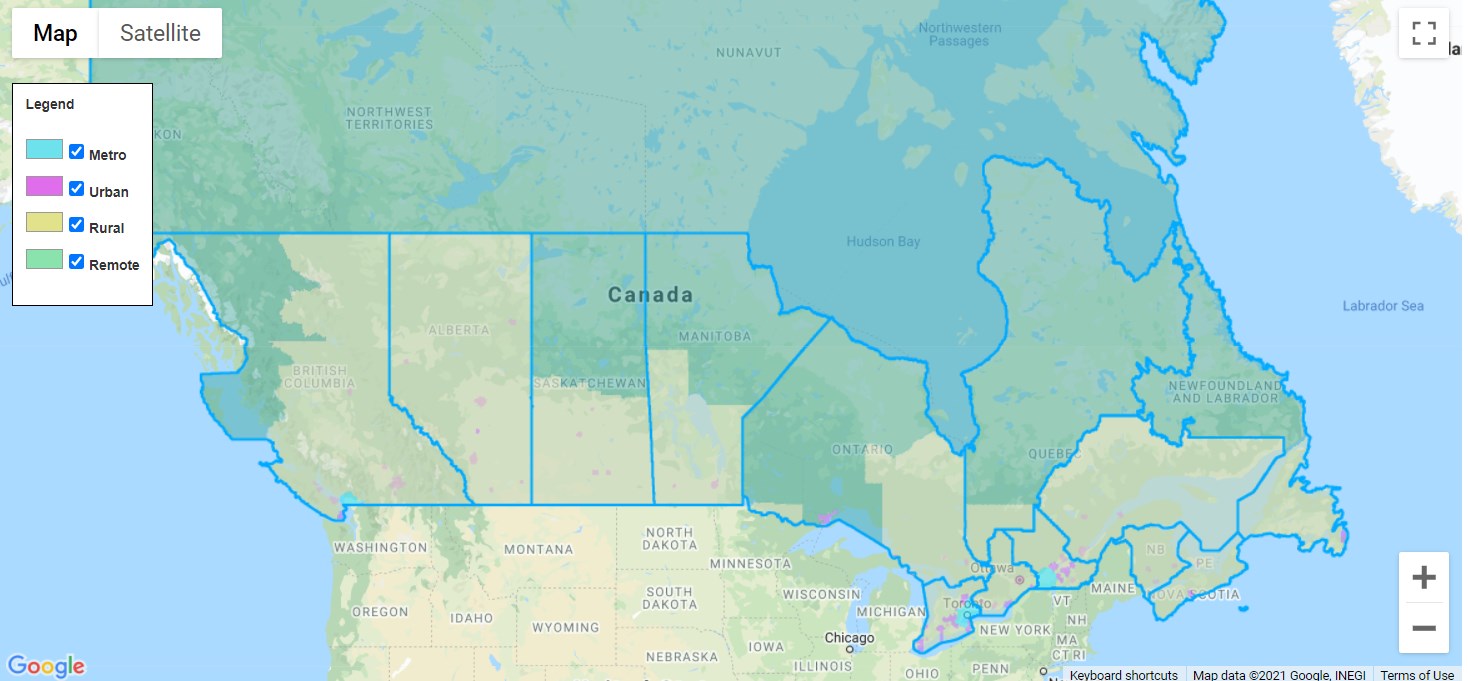With the 3,500 MHz 5G spectrum auction officially kicking off today, Canada takes another step towards realizing true high-speed 5G mobile services.
Innovation, Science, and Economic Development Canada (ISED) first announced the auction guidelines in March 2020. Previously, a band used to provide fixed wireless internet service, but the 3,500 MHz band has been repurposed for 5G as it strikes a good balance between coverage and speed. Its frequency can boost mobile data connections and still cover a fairly large area.
The wireless radio waves in the 3,500 MHz won’t be able to propagate as far as the 600 MHz 5G spectrum auctioned in 2019. Thus, its auction includes 1,504 licenses spread across 172 service areas known as tier 4 areas–far more than the 112 licenses sold in the 600 MHz 5G auction.


The finer division of service areas and higher number of licenses naturally build a more complex auction. Thus, ISED has not yet set an official end date for the bidding process. Following the bid’s conclusion, the winners will have 45 days to submit 80 per cent of their final payments. The results will be published five days after the auction closes.
Whereas the 600MHz spectrum auction only attracted interest from Rogers and Telus, all three major carriers will participate in the 3,500 MHz spectrum auction alongside 20 other carriers. Toronto-based internet service provider (ISP) TekSavvy also qualified to bid but withdrew last week due to CRTC’s reversal on the 2019 wholesale internet pricing decision.
Moreover, Shaw and its subsidiary carrier Freedom Mobile will also skip this auction due to their ongoing merger with Rogers.
New frequencies – so what?
The most pertinent question now is when the new frequencies will translate to tangible services. To that end, ISED told reporters during a background briefing before the June 15 auction that it will impose stronger deployment requirements for license winners. In areas with large population centres like Toronto and Vancouver, licensees will need to provide service to at least 30 per cent of the population in that area within five years, 50 per cent within 10 years, and 70 per cent within 20 years.
Operators with established 4G networks in urban centres have even tighter deadlines. They must deliver service to at least 90 per cent of that population within five years, and 97 per cent within seven years, as well as 95 per cent of the surrounding rural area within 10 years. In areas without urban centres, the target is 90 per cent coverage within seven years and 97 per cent within 10 years.
ISED has also set aside 50 MHz of spectrum for regional providers in areas with high spectrum availability. In areas where there isn’t enough spectrum for set-asides, the full available spectrum range will be open for bidding.
Most 5G networks in Canada deliver services on the 600 MHz, 1,700MHz, 2,100 MHz and 2,600MHz wireless frequencies. They also rely on the 4G core — or the network’s backend — which lacks the advanced features of the 5G core. Unlocking the 3,500 MHz band greatly increases the available bandwidth and boosts the speed to 5G users.
However, even without the 3,500 MHz band, Canada already leads other G7 countries in 5G speed and availability. According to Ookla’s World 5G Report 2020, Canada’s 5G networks reached a median speed of 209 Mbps. The 3,500 MHz band rollout will push speeds far above that.
Users who own a 5G-enabled phone would only need to wait for the faster plan once they become available through their carriers. Most existing 5G phones already support all bands under 6 GHz.
Looking ahead, the next spectrum auction will take place sometime in Q1 2023 for the newly-unlocked 3,800 MHz spectrum. By unlocking the 3,800 MHz band for 5G, the government hopes to provide enough spectrum to address channel bandwidth restraints.
